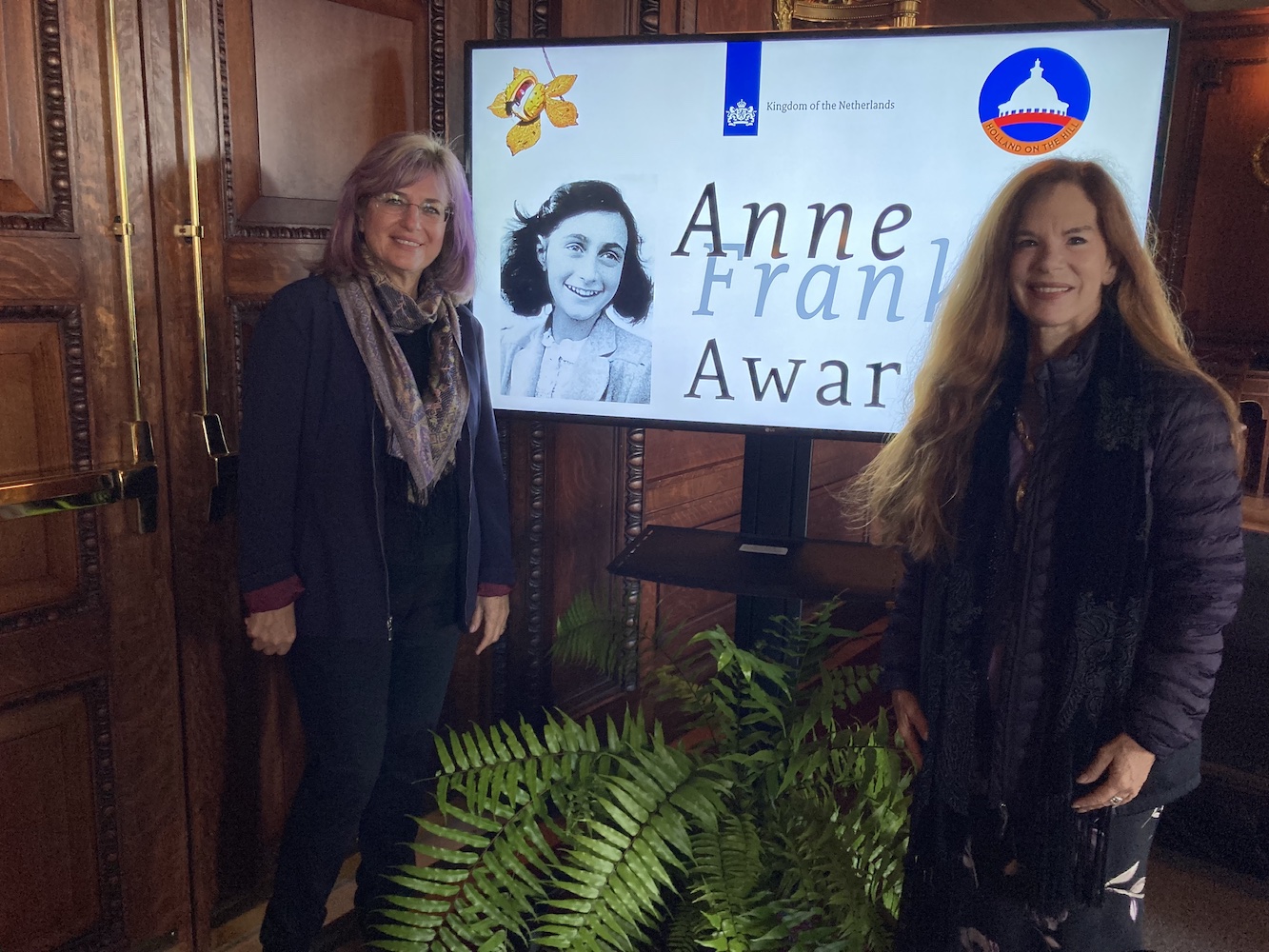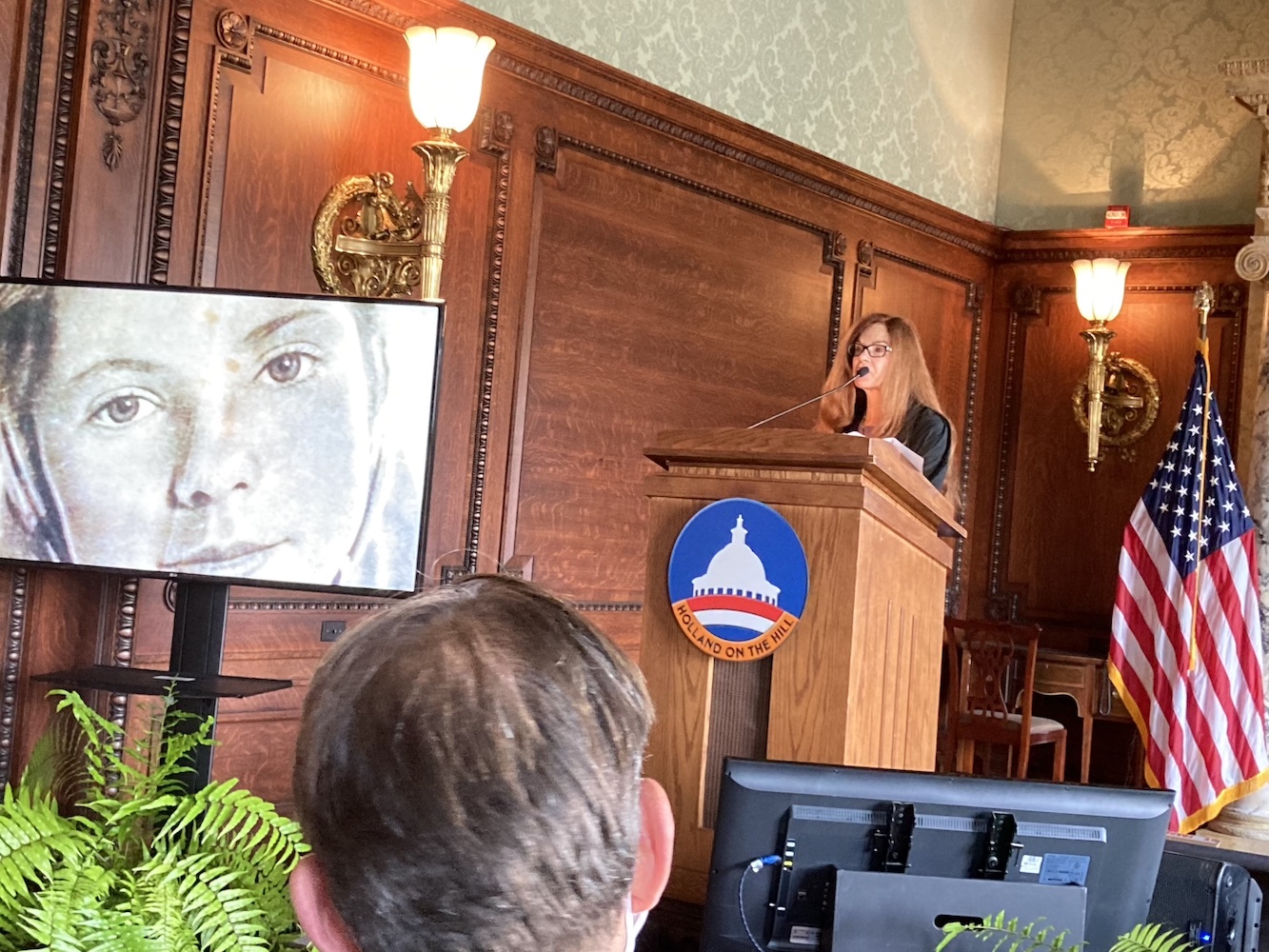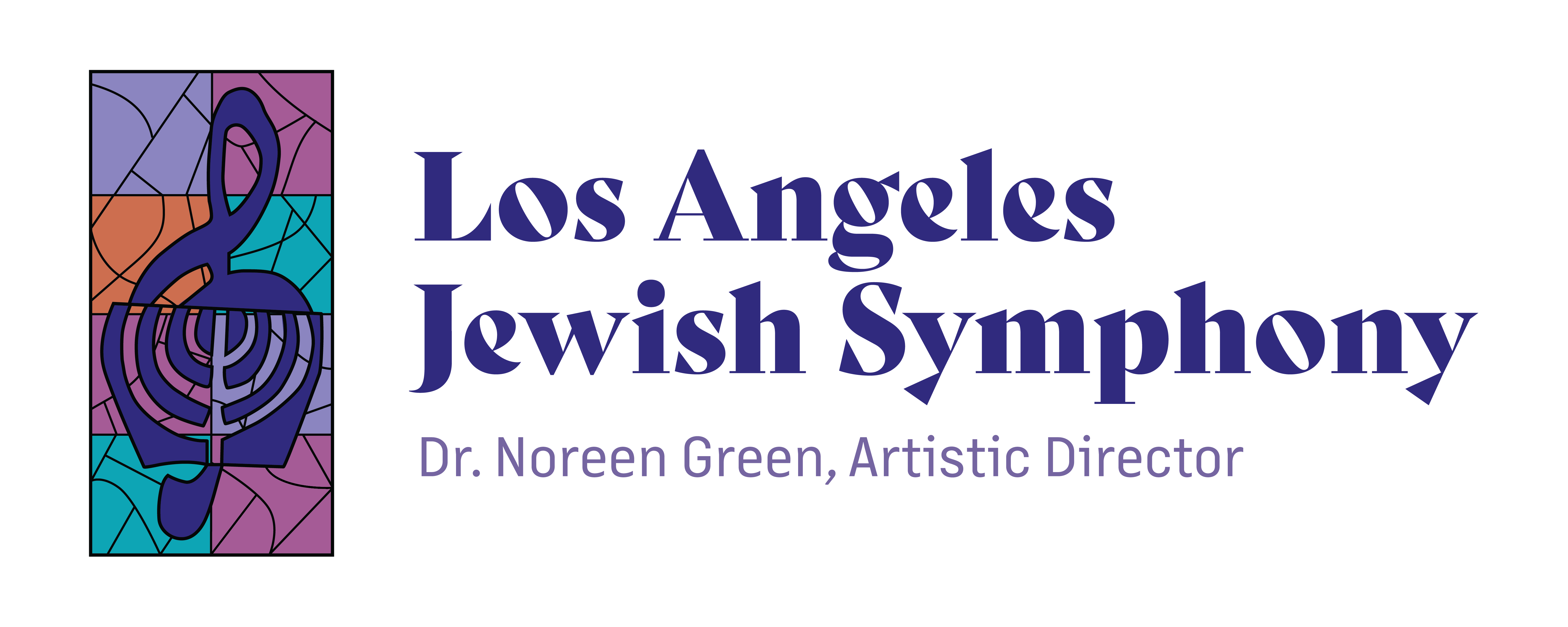Even though the violin was light, I felt the weightiness of my mission deep within my heart. Here was this instrument that had survived the Shoah, transported and cared for by its owner through unimaginable circumstances. And my journey? The extreme difference wasn’t lost on me. My life was not in danger, no one was shooting at me, my head was held high, I wasn’t surveying my surroundings wondering if I would be kidnapped and murdered, if my family was safe, what would happen to me next. I was well-fed, warm in my down jacket, walking to the airport exit, where we would be picked up in an SUV and transported to our newly remodeled hotel to sleep in a comfy bed.
I was at Dulles Airport, taking this precious instrument to the Anne Frank Awards, a ceremony hosted by the Ambassador of the Kingdom of the Netherlands, and on to its final home with Avshi Weinstein of the Violins of Hope project. I felt the awesome responsibility of this mission. Rachelle Blaine, my friend from high school and daughter of a Holocaust survivor, was walking next to me. She had no idea what I was feeling, wheeling my luggage, my backpack heavy on my shoulders and the violin securely in my hand.
How did this trip come to be?
In October 2017, I became involved with the Violins of Hope project, headed up in Los Angeles by Susanne Reyto. The violins were scheduled to come to Los Angeles in 2020 to be presented through a series of events: an exhibition at the Holocaust Museum, concerts at several venues and education programs presented at schools throughout the area. I was to conduct my orchestra, the Los Angeles Jewish Symphony, in the opening gala concert scheduled for March 22, 2020, at The Soraya, the beautiful theater on the campus of California State University, Northridge.
As I was leaving a high school reunion party a few months before, I yelled out, “Don’t forget to buy your tickets to our Violins of Hope concert!” Rachelle shouted back, “What is that??” Since I was already out the door, I gave her my quick “elevator speech” summary of the project. “The concert will feature violins recovered and restored from the Holocaust!” She said, “Well, my mother’s violin should be in that concert!” That stopped me my tracks, and for the next 45 minutes, Rachelle told me about her mother’s violin:
“My mother, Joyce Vanderveen, was a prima ballerina, musician, actress and author. She was born in Amsterdam and lived there during the early part of her life. My grandmother, Rachel, was a Jewish seamstress and quite deaf. She was banished from her family for marrying my grandfather, Jan, an orphan – a non-Jew, who was a sculptor and master craftsman.
My mother was a brilliant student and a child prodigy. At only nine years old, she conducted the children’s orchestra and danced and played violin in all the local festivals.
Her violin was a gift from my artist grandfather, who chose the instrument for her because:
It was small, and my mother was very petite.
It was elegant; and
The color of the wood matched her complexion – that of a redhead.
When Joyce was barely 13, the Nazis invaded Holland. One day after a violin lesson, one of the shopkeepers grabbed her and told her to RUN in the opposite direction. The Nazis were rounding up Jews in the next street and shooting them.
Eventually forced to leave Amsterdam or starve, my mother, grandmother and aunt escaped to Northern Holland on two bicycles with no tires, where they found refuge with three impoverished farm families. My mother had no food or soap. She was bone thin, covered in boils, and suffered from scarlet fever, but she survived. The rest of her family was murdered by the Nazis. The one possession she took with her was her violin.
After the war, my mother continued to nurture her great love of ballet and became the star of the Royal Netherlands Ballet, later moving to Paris to join the Monte Carlo Ballet. She toured 19 countries and performed before the crowned heads of Europe as a Prima Ballerina.
In Paris, during a performance, she was seen by a member of the Kennedy family, who arranged for her to come to America on a special artist’s visa, signed by Senator John F. Kennedy.
She took this privilege very seriously and contributed her talents for the rest of her life.
Her first acting job was on the Live General Electric Theatre, hosted by Ronald Reagan. Two future presidents in less than a year – not too shabby. Then she was offered a contract with Universal Pictures, where she met the love of her life (my father), Louis Blaine, head of International Press and Publicity for the studio. She did many television shows and movies, including “The Ten Commandments.”
In 1997, my mother received a surprising call from one of her childhood girlfriends who also had survived the war. The friend was writing an article on Anne Frank and had visited the museum in Amsterdam. She told my mother, ‘Your picture is on the wall above Anne Frank’s bed!’
My mother, who had never visited the museum, was astonished. She said, ‘I want everyone in the world to go, but I don’t need to go because I lived it.’ Once identified as ‘the mystery girl on the wall,’ however, she wound up doing a beautiful interview at the Anne Frank Museum, which remains in their permanent archive.
After she retired from performing, Joyce devoted her life to serving her community, in part by training professional dancers, which she did for over 25 years. One in particular became her protégé, a 12-year-old boy from Russia named Ilya Burkov.
Ilya needed an instrument for music lessons, so Joyce loaned him her violin. When he and his mother were forced back to Russia, Ilya returned the violin, where it remained under the bed for 15 years.
Ilya is now a doctor, 6 ‘5”, a graduate from the University of Cambridge, who continues to love ballet and classical music. He told me, ‘Joyce was an incredible person full of joy and energy. I always wanted to make her proud and gave 110%!’
Thanks to a chance reunion with marvelous Noreen, I was catapulted into a search for Ilya and for answers to the mystery of the violin. I was able to locate him, and because of him and Noreen and her resources, I know now about the violin’s past and how my mother came to own and play it.
I have wonderful memories of my mother playing classical music on the PIANO. I never heard her play the violin. I think the reason is that it reminded her of the awful war years.”
Rachelle wasn’t sure what to do with the violin. I called up one of my dear friends and a member of the LAJS, Jonathan Rubin, who also worked at a violin shop in LA – Cauer Violins – and made arrangements with Rachelle to take the violin to be evaluated. When we got to the shop, Robert Cauer immediately made us take the violin out of its mite-infested case. The violin was all right, but the bow’s horsehair had been eaten up by the critters. Robert, originally from Germany, handled the violin with such care and love. He told us it was French- made by Mirecourt, from the 1920’s and in excellent condition. He cleaned it up for Rachelle and gave her a new case to keep it safe.
In January of 2020, at an LAJS donor recognition event, Rachelle told the story of her mother’s violin, and Jonathan played it. It was very emotional for Rachelle, and all those in attendance, to hear the violin being played after so many years of silence. It wasn’t yet part of the official Violins of Hope collection, yet I hoped to have Jonathan play it as part of the upcoming concert.
Our first rehearsal was scheduled for March 15, 2020.
On March 13, the world shut down due to the COVID pandemic. The violins, already here in LA, went to the basement of The Soraya for safekeeping. No one knew what would happen next.
After two and a half years of preparation, it was devastating.
Avshi called me a month later to ask if Rachelle would like to donate the violin to the VOH project and present the violin at a special event in Washington, D.C. Amnon Weinstein, Avshi’s father, was being given the Anne Frank Special Recognition Award from the Ambassador of the Kingdom of the Netherlands to the US for his work with the VOH project. Rachelle’s answer was a resounding Yes! The event was scheduled for May 2020 and postponed twice due to the pandemic. The event finally happened on Oct 27-28, 2021. Rachelle and I traveled to Washington to present the violin to Avshi (Amnon was not able to travel) on this auspicious occasion.

The following morning was the main event, the presentation of the awards at the Library of Congress. Rachelle was asked to speak about her mother’s life and the VOH project and to present the violin to Avshi. She was a star, and although not accustomed to public speaking, she did us all proud projecting her mother’s story in a strong voice, introducing videos of her mother’s interview at the Anne Frank house and of Yitzchak Perlman and telling the story of the VOH project. Finally, it was time to present the violin.

I had the honor of coming on the stage with the precious instrument so that Rachelle could hand it to Avshi, who then handed it to Michael Shaham, a young violinist from Israel, whose father, Hagia Shaham, is a world-renowned violinist and longtime friend and colleague of the Weinsteins. Eighteen-year-old Michael, who is studying at the Curtis Institute in Philadelphia, understood the magnitude of the moment and with great sensitivity played the Theme from Schindler’s List. There wasn’t a dry eye in the house. Michael made that violin sing, its voice becoming stronger as the music soared.
They say that music has the power to move mountains. That morning, with powerhouse dignitaries in the room — Madame Speaker of the House Nancy Pelosi, several congressional members, ambassadors, high-level staff members — that little violin brought us all together, united in the power of the memory of Anne Frank and what she represented: the striving for human dignity and tolerance.

Now the violin is back in Los Angeles as it awaits our rescheduled Violins of Hope concert, where it will sing with the choir of instruments as part of the LA Jewish Symphony on the magnificent stage of The Soraya. After the concert, the violin will join the other instruments in the collection as they continue their journey around the world, filling us with hope as they educate people of all ages about the Holocaust and tell their stories of each instrument’s individual journey to a tiny violin shop in Tel Aviv.
